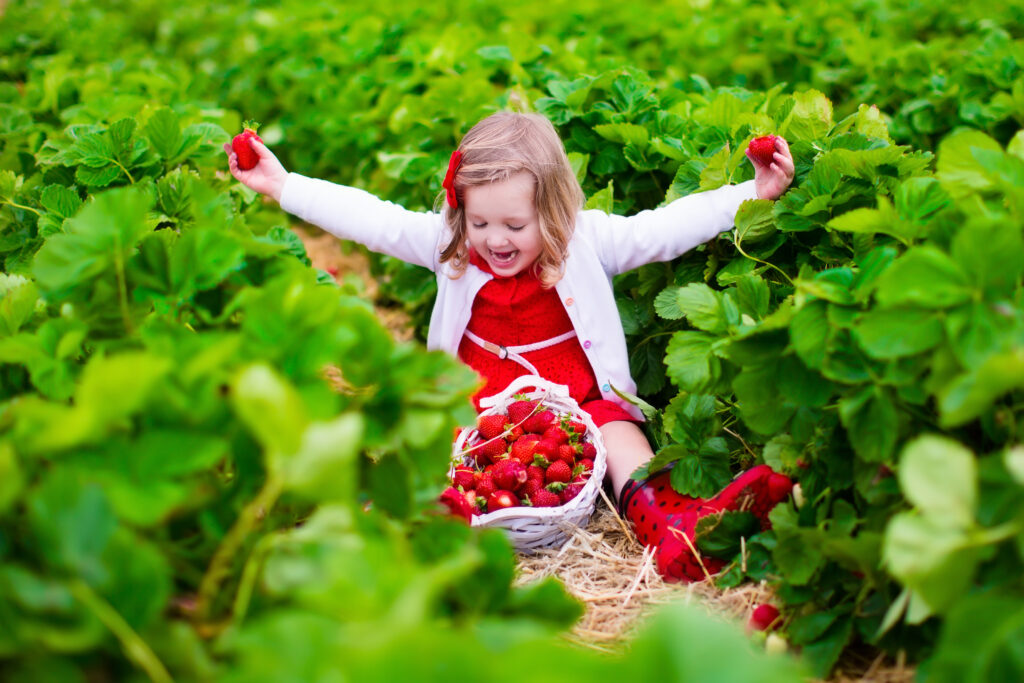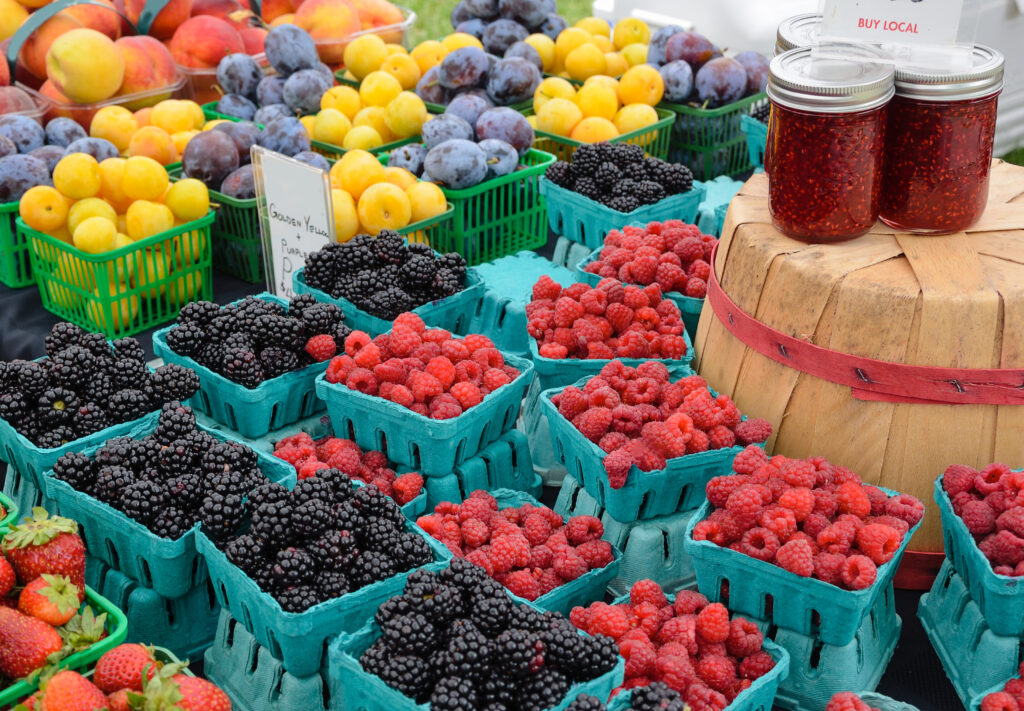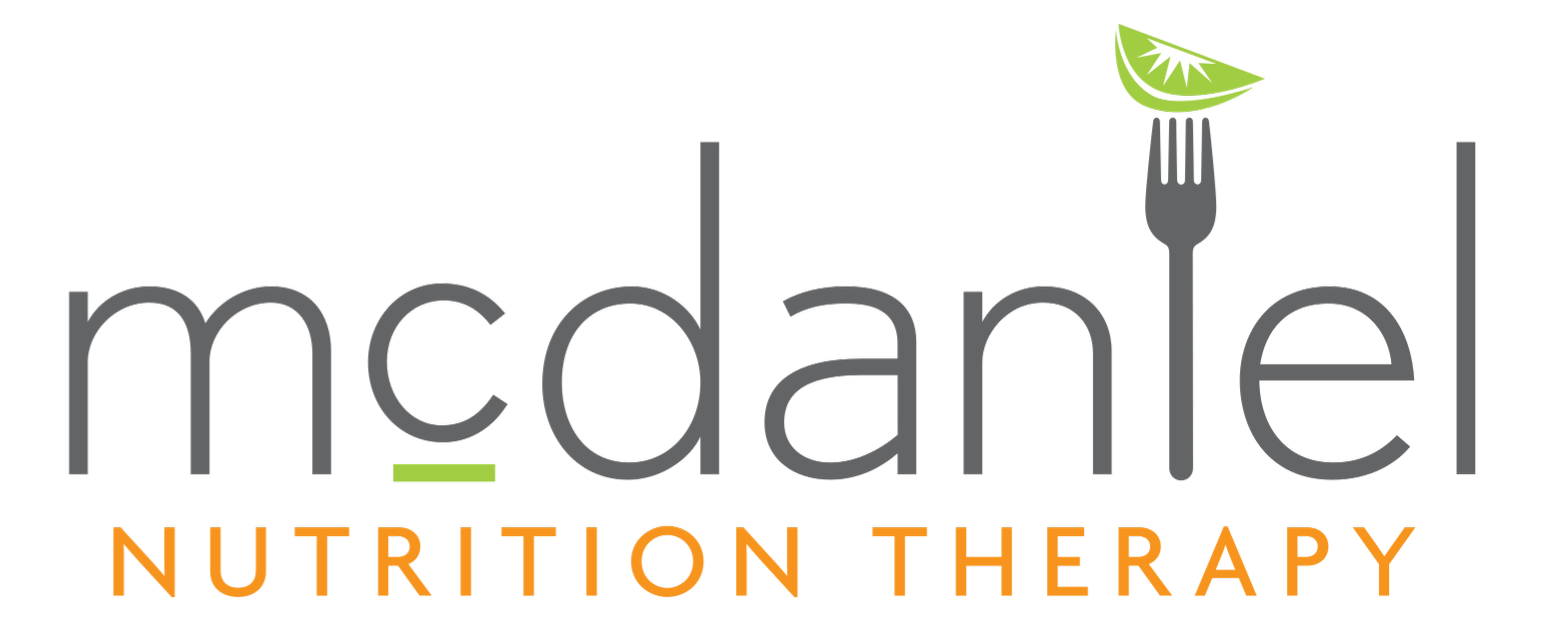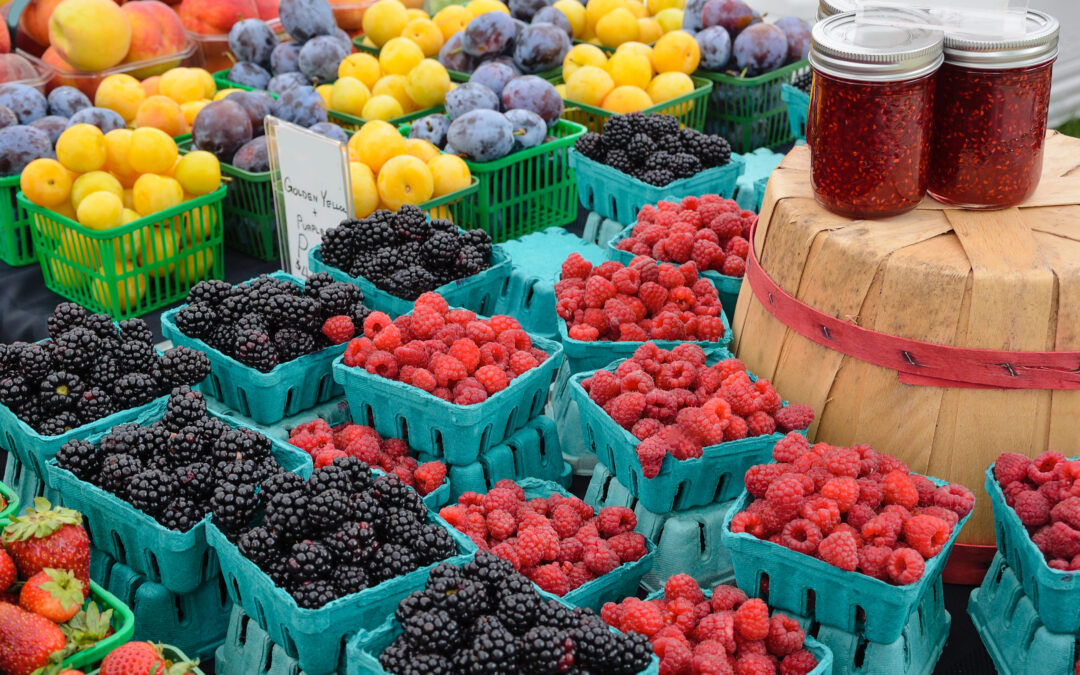Summer is upon us!
Although May is “strawberry season” here in St. Louis, many parts of the country continue to harvest them throughout June and into July. Other berries continue to reach their peak throughout the summer and early fall:
- Cherries typically ripen between mid-April to late July.
- Blueberry season is early June through early August.
- Raspberry and blackberry harvest occurs from mid-June to early October.
These fruits make summer that much sweeter by packing a punch of antioxidants and other health benefits!

Health Benefits of Berries
Berries have a reputation as super foods, and with good reason! They pack a punch when it comes to nutrition.
Berries are high in antioxidants
Okay, we have all heard of the benefits of antioxidants at some point or another. To briefly recap, antioxidants in berries, called phenolic compounds, help to reduce oxidative stressors in the body. High oxidative stress is linked to many chronic diseases, including cardiovascular and neurodegenerative disease and certain cancers. Because of this berries have often been coined “superfoods.”
Here are a few of beneficial antioxidants in berries:
- Anthocyanins: the compound found in blue, purple, and red foods, have the unique ability to cross the blood-brain barrier to support brain health.
- Resveratrol: found in blueberries, bilberries, cranberries, and grapes is anti-inflammatory, improves skin, and lowers glucose intolerance and insulin sensitivity.
Berries are also low glycemic.
The glycemic index (GI) measures how quickly a food causes your blood sugar to rise. Low glycemic index values range from 1 to 55, medium from 56-to 69, and high from 70 and up. But the combination of foods you eat also plays a role in the rise in blood sugars.
Knowing that berries have a much lower GI can help you to choose fruits that control your sugar intake, boost weight loss, and help lower the risk of type 2 diabetes. Don’t remove those higher GI fruits from your diet just yet! In general, it is recommended that you eat at least two servings of fruit a day.
And an Excellent Sources of Nutrients
Finally, berries are an excellent source of micronutrients, which also help you get your daily fiber. Eating a variety of colorful berries ensures that you are maximizing your micronutrient intake. Berries are a reliable source of vitamin C, K, E, folate, potassium, magnesium, manganese, and copper. Additionally, eating a cup of blueberries or strawberries adds approximately 3.5 grams of fiber and 8 grams from blackberries.
Berry picking is fun for the entire family!

Buying Local
Growing up, my family went to a local blueberry farm every summer. We would arrive early in the day with our empty bowls ready to be filled. The bowls were weighed, and then we could pick and eat to our heart’s delight. Lunch was eaten in the shade of a large weeping willow by a small swing set. As the day ended, we would weigh our filled-to-the-brim bowls to pay for the summertime adventure. The owners would joke that the children should also be weighed before and after the picking. Not only would we have berries all summer long, but my mother froze the berries for winter use. The laughter and memories will last a lifetime. To make your own family memories, consider one of these “you pick” farms.
Summer is also the return of our local Farmer’s Markets. There are many benefits to buying your seasonal berries at a farmer’s stand.

Many local farmers grow their produce organically, using natural fertilizer and pesticides. Did you know that strawberries and cherries made the “Dirty Dozen” 2022 list again? Every year, the Environmental Working Group, an independent non-profit agency, updates the list of the top dozen fruits and vegetables affected by heavy loads of pesticides. Buying organic, local produce on the top dozen list can help you lower your body’s chemical burden.
The freshest produce is available. Nothing tastes sweeter than a fresh berry! Local farmers allow their fruits and produce to ripen naturally before harvest. Whereas larger producers may use gases to stimulate the ripening process or pick the product too early. You’ve likely been to the grocery store and lamented the fact that the fruits were not ripe. Fresh berries, not exposed to heat or oxidation during processing, retain their highest antioxidant capacity.
This is your opportunity to try many varied species of berries. There are more than 270 species of berries! Raspberries alone come in varietals that include black, white, golden, and traditional red. Pineberries are a cross between a strawberry and a pineapple. And purple, blue, or darker huckleberries give an extremely sweet flavor.
Support Sustainability
You can support sustainable practices. Access to fruit and vegetables year-round is a convenience, broadening the availability of many assorted flavors for all palates. Yet, produce often travels many miles to arrive at big-box retailers, usually carrying a larger carbon footprint. By purchasing seasonal berries through your local farmer’s market, you are supporting more climate-friendly agricultural practices and a reduction in greenhouse gas emissions. Also, much of the packaging at farmer’s markets is biodegradable or recyclable. Local farmers help build sustainable practices by enriching the soil with cover crops, using fewer pesticides and nitrogen-based fertilizers, providing habitats for helpful insects, utilizing stormwater runoff, and so much more! Your support helps contribute to a healthier environment.
Buy local and support your community and economy. Local small-scale farming keeps local land in production, increases money in the community, and builds community connectedness. According to the USDA, only 15 cents return to the farmer when produce is purchased at larger retailers. Therefore, supporting your local farmer cuts out middle-man pricing. Overall, purchasing seasonal berries and other produce adds that much more to the local economy.
Whether you buy local, pick it yourself, or continue to shop at the grocery store, try to add berries to your “must-haves” this summer.
Here a delicious “nice cream” recipe sure to sweeten the deal!
Print
Banana Berry Ice Cream
- Yield: 4 servings 1x
Description
This recipe is plant-based, vegan, dairy-free and naturally sweet. This is an easy 5-minute prep for on-the-spot “nice” cream.
Ingredients
- 2 ripe bananas, cut into pieces or 1 cup frozen bananas
- 2 cups frozen blueberries
- ¼ cup coconut milk or natural plain yogurt
- Maple syrup (optional)
- Lemon juice (optional)
Instructions
- Freeze the bananas overnight.
- Place frozen banana, blueberries, and coconut milk or yogurt in a food processor and pulse until it is chunky. Scrape sides of bowl, and then blend on high until smooth.
- Add 1 tablespoon of maple syrup and squeeze of lemon juice for flavor, if using.
- Sprinkle on dark chocolate chunks for an extra antioxidant boost.
- Serve immediately.
- To store, place in an airtight covered dish and freeze.
Nutrition
- Serving Size: 1/2 cup
- Calories: 126
- Sugar: 18
- Fat: 0
- Carbohydrates: 32
- Protein: 1
References
- Dumont, A. (2017, December 5). The Economic Impact of Locally Produced Food. Www.stlouisfed.org. https://tinyurl.com/ej75e3da
- Environmental Working Group. (2022). Dirty DozenTM Fruits and Vegetables with the Most Pesticides. Ewg.org. https://www.ewg.org/foodnews/dirty-dozen.php
- Mayo Clinic. (2017). Glycemic index diet: What’s behind the claims? Mayo Clinic. https://www.mayoclinic.org/healthy-lifestyle/nutrition-and-healthy-eating/in-depth/glycemic-index-diet/art-20048478
- Olas B. (2018). Berry Phenolic Antioxidants – Implications for Human Health? Frontiers in Pharmacology, 9, 78. https://doi.org/10.3389/fphar.2018.00078
- Resveratrol. (2014, April 29). Resveratrol. Linus Pauling Institute. https://lpi.oregonstate.edu/mic/dietary-factors/phytochemicals/resveratrol
- Thalheimer, RD, LDN, J. (2015, July). Celebrate Summer Fruits – Today’s Dietitian Magazine. Www.todaysdietitian.com. https://www.todaysdietitian.com/newarchives/070115p20.shtml#:~:text=%22Berries%20contain%20antioxidants%20like%20polyphenols
- US EPA, OECA. (2018, October 31). Organic Farming | US EPA. US EPA. https://www.epa.gov/agriculture/organic-farming
- United States Department of Agriculture. (2022, March 17). USDA ERS – Food Dollar Series. Www.ers.usda.gov. https://www.ers.usda.gov/data-products/food-dollar-series/

